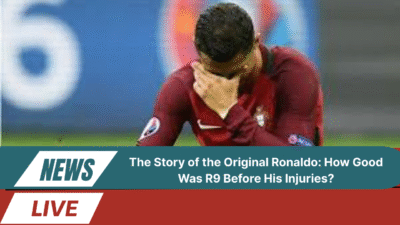What if the fate of a football club didn’t depend on billionaire owners or massive transfer budgets, but on numbers, probabilities, and overlooked talent? Could a team once lost in the shadows of English football rise to compete with giants of the Premier League using nothing but sharp analysis and clever decision-making? The Moneyball Success of Brentford FC forces us to rethink how we define success in modern football.
When Brentford finally secured promotion to the Premier League in 2021, many critics expected a short-lived fairytale. Yet, season after season, the Bees have defied the odds. Their victories aren’t built on expensive superstars but on smart recruitment, data analytics, and a bold vision pioneered by their owner, Matthew Benham. This strategy, rooted in principles similar to those made famous in American baseball, has transformed Brentford from a modest club into a respected force.
So how exactly did Brentford achieve what many thought impossible? Was it luck, or was it a meticulously calculated gamble based on statistics and human ingenuity? Let’s dive into the fascinating journey of how the club turned the philosophy of “Moneyball” into a Premier League success story.

The Rise of Brentford FC – From Lower Leagues to the Premier League
1.A Club Once on the Brink of Obscurity
Brentford’s story wasn’t always one of triumph. For decades, the West London club bounced between lower divisions, often struggling financially. Their Griffin Park ground, though full of charm, symbolized a club far from the limelight of English football.
2.The Visionary Owner: Matthew Benham’s Arrival
In 2012, lifelong fan Matthew Benham took control of the club. Unlike traditional owners, his background wasn’t in finance or global business but in sports betting. Using his expertise in data-driven gambling models, he saw a way to revolutionize Brentford’s future.
Understanding the “Moneyball” Philosophy in Football
1.What “Moneyball” Means in Sports
The term “Moneyball” originates from baseball, where the Oakland Athletics used data to compete against wealthier teams. In football, the principle is similar: identify undervalued players using statistics rather than intuition alone.
2.Why Traditional Scouting Failed Smaller Clubs
Conventional scouting often favored flashy performances or gut feelings. For smaller clubs with tight budgets, this approach led to overspending. Brentford turned instead to data, seeking measurable qualities overlooked by rivals.
Matthew Benham and the Data Revolution
The Background of a Professional Gambler Turned Football Owner
Benham built his fortune through sports betting models that predicted match outcomes more accurately than bookmakers. He applied the same mathematical mindset to Brentford’s recruitment policy.
Applying Betting Algorithms to Football Recruitment
Using predictive models, Brentford identified players with undervalued potential—often from lower leagues or abroad. This approach minimized risks while maximizing returns on player investments.
Smart Recruitment – Brentford’s Transfer Policy
Finding Value in Undervalued Players
Brentford targeted players based on qualities such as work rate, chance creation, and adaptability. This allowed them to sign stars like Ivan Toney from Peterborough, who went on to become a Premier League standout.
Profiting from Player Sales and Reinventing the Squad
The club adopted a “buy low, sell high” strategy. By selling Ollie Watkins and Saïd Benrahma for substantial profits, Brentford reinvested wisely, maintaining competitiveness without overspending.
Data Analytics as Brentford’s Competitive Advantage
Using Advanced Metrics to Scout Players
Brentford’s analysts looked beyond goals and assists. They studied pressing efficiency, shot creation actions, and recovery stats—numbers that revealed hidden gems.
Tactical Decisions Driven by Data Insights
Data shaped not only recruitment but also tactics. Manager Thomas Frank used insights on pressing intensity and expected goals to craft strategies against stronger opponents.
Case Studies of Brentford’s Success Stories
The Rise of Ivan Toney
Signed for under £10m, Toney’s goal-scoring consistency and pressing ability exemplify Brentford’s model of identifying undervalued talent.
The Sale of Ollie Watkins and Saïd Benrahma
Watkins moved to Aston Villa for £28m, and Benrahma to West Ham for £25m. Both transfers demonstrated Brentford’s ability to profit while sustaining performance.
Comparing Brentford’s Strategy to Other Premier League Clubs
Why Bigger Budgets Don’t Always Mean Smarter Spending
Clubs with enormous budgets often waste millions on underperforming stars. Brentford proves that precision and intelligence can outperform reckless spending.
Lessons for Other Mid-Table Clubs
Clubs like Brighton and Aston Villa have adopted similar models, showing that Brentford’s blueprint could redefine football economics.
Challenges of the “Moneyball” Model in the Premier League
Player Retention and Market Inflation
As Brentford’s players gain recognition, retaining them becomes difficult. Market inflation could also make it harder to find undervalued talent.
Risks of Overreliance on Data
While analytics are powerful, football remains unpredictable. Injuries, psychology, and team chemistry are factors data can’t fully capture.
The Future of Brentford FC and Sustainable Success
Building a New Stadium and Expanding the Fanbase
The move to Brentford Community Stadium in 2020 signaled ambition. It offers revenue growth and a stronger fan experience.
Can Brentford Maintain Their Edge Long-Term?
The challenge now is adapting as rivals catch up with analytics. Sustaining success requires continuous innovation.

FAQs About Brentford’s “Moneyball” Success
Q1: What is the “Moneyball” Success of Brentford FC?
It refers to Brentford’s data-driven strategy of recruiting undervalued players and competing effectively in the Premier League despite limited resources.
Q2: Who is Matthew Benham and why is he important to Brentford?
Matthew Benham is the club’s owner and a former professional gambler who introduced data analytics into recruitment and strategy.
Q3: How does Brentford’s transfer policy work?
They focus on buying undervalued players, developing them, and selling them for profit while reinvesting smartly.
Q4: Has Brentford inspired other clubs with this model?
Yes, clubs like Brighton have adopted similar approaches, showing the impact of analytics-driven football.
Q5: Can Brentford sustain this model long-term?
Sustainability depends on innovation and adaptation, but their foundation is strong for continued growth.
Conclusion: A Blueprint for Modern Football?
Brentford’s rise isn’t a miracle but the result of calculated risk, visionary leadership, and the courage to defy tradition. Their “Moneyball” Success of Brentford FC shows that intelligence and innovation can rival financial muscle in football.
Read AlSO: “Ranking Every Premier League Home Kit for the 2025/26 Season“










